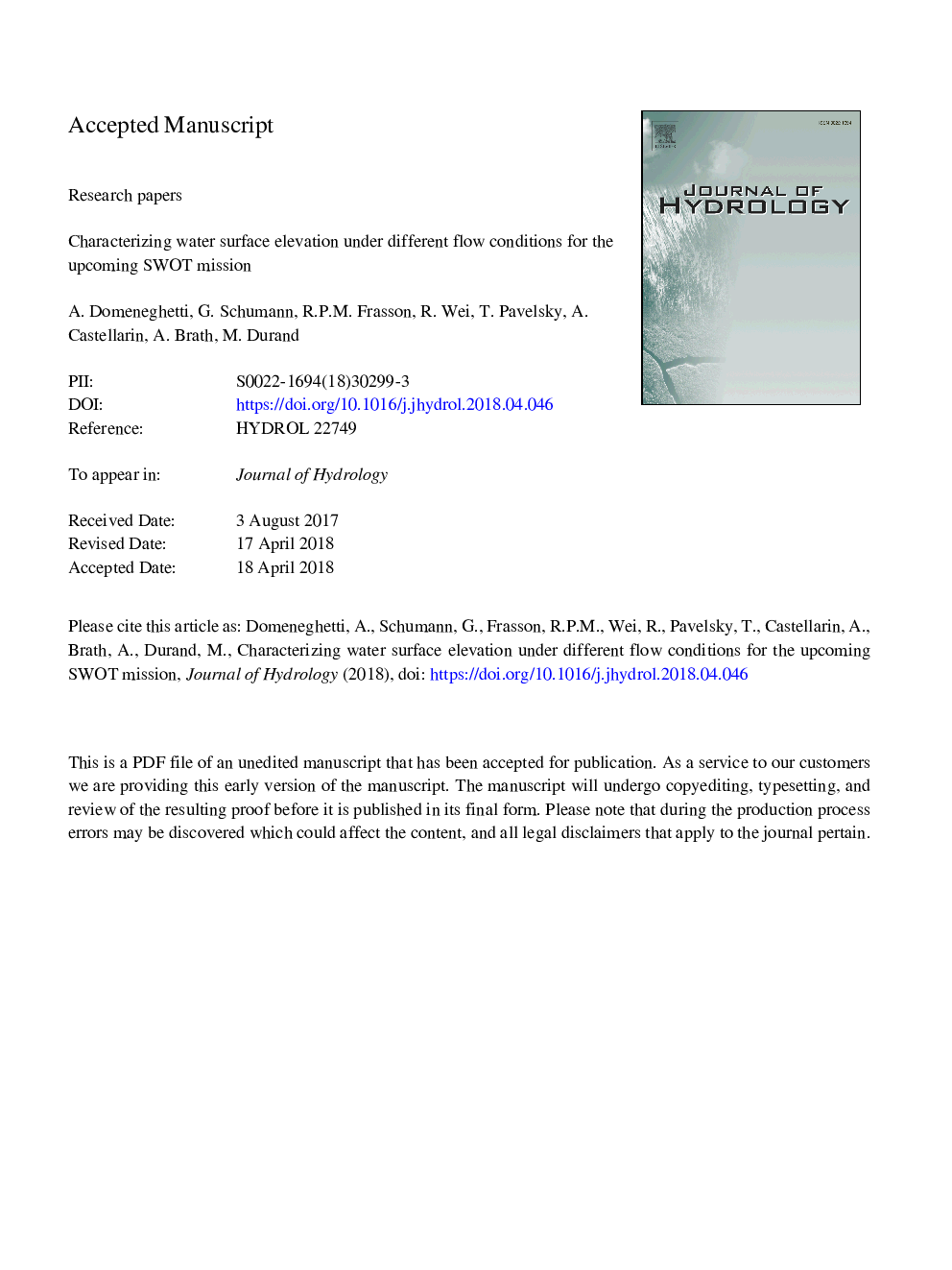| Article ID | Journal | Published Year | Pages | File Type |
|---|---|---|---|---|
| 8894877 | Journal of Hydrology | 2018 | 37 Pages |
Abstract
The Surface Water and Ocean Topography satellite mission (SWOT), scheduled for launch in 2021, will deliver two-dimensional observations of water surface heights for lakes, rivers wider than 100â¯m and oceans. Even though the scientific literature has highlighted several fields of application for the expected products, detailed simulations of the SWOT radar performance for a realistic river scenario have not been presented in the literature. Understanding the error of the most fundamental “raw” SWOT hydrology product is important in order to have a greater awareness about strengths and limits of the forthcoming satellite observations. This study focuses on a reach (â¼140â¯km in length) of the middle-lower portion of the Po River, in Northern Italy, and, to date, represents one of the few real-case analyses of the spatial patterns in water surface elevation accuracy expected from SWOT. The river stretch is characterized by a main channel varying from 100 to 500â¯m in width and a large floodplain (up to 5â¯km) delimited by a system of major embankments. The simulation of the water surface along the Po River for different flow conditions (high, low and mean annual flows) is performed with inputs from a quasi-2D model implemented using detailed topographic and bathymetric information (LiDAR, 2â¯m resolution). By employing a simulator that mimics many SWOT satellite sensor characteristics and generates proxies of the remotely sensed hydrometric data, this study characterizes the spatial observations potentially provided by SWOT. We evaluate SWOT performance under different hydraulic conditions and assess possible effects of river embankments, river width, river topography and distance from the satellite ground track. Despite analyzing errors from the raw radar pixel cloud, which receives minimal processing, the present study highlights the promising potential of this Ka-band interferometer for measuring water surface elevations, with mean elevation errors of 0.1â¯cm and 21â¯cm for high and low flows, respectively. Results of the study characterize the expected performance of the upcoming SWOT mission and provide additional insights into potential applications of SWOT observations.
Related Topics
Physical Sciences and Engineering
Earth and Planetary Sciences
Earth-Surface Processes
Authors
A. Domeneghetti, G.J.-P. Schumann, R.P.M. Frasson, R. Wei, T.M. Pavelsky, A. Castellarin, A. Brath, M.T. Durand,
